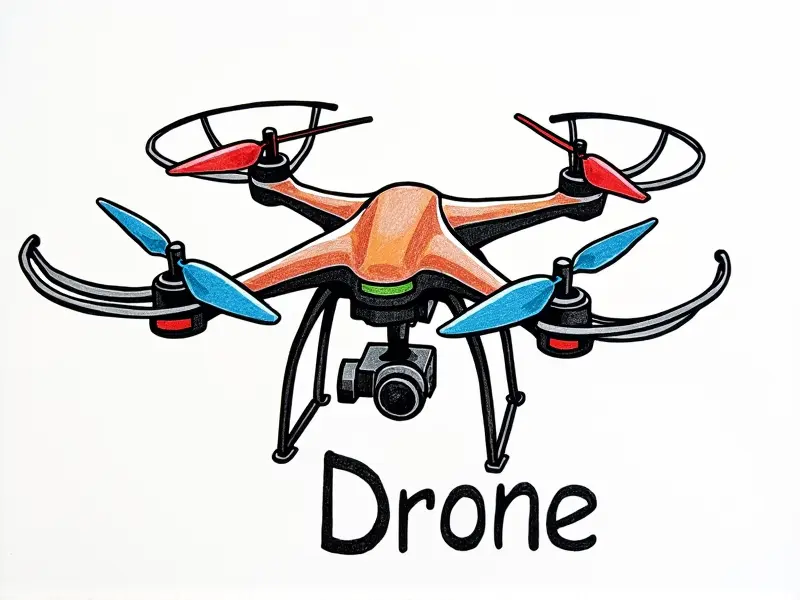How to program a RC transmitter?

Mastering RC Transmitter Programming Basics
Programming an RC (Radio Control) transmitter can seem daunting at first, but understanding the basics is crucial for optimizing your remote control experience. Whether you're a hobbyist or a professional racer, knowing how to program your RC transmitter efficiently will enhance your enjoyment and performance.
Quick Guide to RC Transmitter Setup
The initial setup of an RC transmitter involves several key steps:
- Select the Model Type: Choose whether you're setting up a model airplane, car, boat, or drone. Different models may require different settings.
- Bind to Receiver: Ensure your transmitter is paired with the correct receiver for communication between the two devices.
- Configure Switches and Trims: Adjust switches and trims according to the specific needs of your RC vehicle or aircraft.
Beginner's Guide to RC Transmitter Programming
If you're new to programming an RC transmitter, start with these essential steps:
- Familiarize Yourself with Controls: Understand the layout and functions of your transmitter’s buttons, switches, and joysticks.
- Read Manufacturer's Manual: Every transmitter model comes with a user manual that provides detailed instructions for programming.
- Practice Basic Settings: Begin by setting up basic features like mode switching and trim adjustments before moving on to more complex configurations.
How to Customize RC Transmitter Settings
Customization is key to tailoring your transmitter for specific needs. Here’s how you can personalize your settings:
- Assign Functions to Buttons: Map functions such as flight modes, camera controls, or special effects to buttons and switches.
- Adjust Sensitivity Levels: Fine-tune the sensitivity of joysticks and sticks for smoother control over your RC vehicle.
- Save Presets: Create and save different preset configurations for various flying conditions or activities.
Ultimate Guide to RC Transmitter Calibration
To ensure optimal performance, calibration is essential. Here’s how you can calibrate your transmitter accurately:
- Center Joysticks and Trims: Start by centering all joysticks and trims manually.
- Use Calibration Mode: Most modern transmitters offer a built-in calibration mode that guides you through the process.
- Check Receiver Signals: Verify that your receiver is receiving signals correctly by testing its response to transmitter commands.
Programming Tips for RC Transmitters
To get the most out of your programming experience, consider these tips:
- Backup Settings: Always save a backup copy of your current settings before making significant changes.
- Test Changes Thoroughly: Before applying new settings in flight or competition conditions, test them extensively on the ground.
- Keep Firmware Updated: Regularly update your transmitter’s firmware to benefit from bug fixes and performance enhancements.
Simplified RC Transmitter Setup Tutorial
A step-by-step tutorial can help you navigate through the setup process more easily:
- Step 1: Power On Transmitter: Turn on your transmitter following the manufacturer's instructions.
- Step 2: Select Model Type: Choose the appropriate model type for your RC vehicle or aircraft.
- Step 3: Pair with Receiver: Follow the pairing procedure to establish a connection between your transmitter and receiver.
Customizing Your RC Transmitter Settings
To fully customize your settings, follow these steps:
- Assign Functions: Customize button assignments for specific functions like camera control or mode switching.
- Adjust Sensitivity: Modify the sensitivity levels of joysticks and switches to suit your flying style.
- Create Presets: Save different configurations as presets for various scenarios such as windy conditions or indoor flights.
Easy RC Transmitter Calibration Guide
Calibration ensures that your transmitter operates smoothly and accurately. Follow these steps to calibrate:
- Center Controls: Manually center all joysticks, trims, and switches.
- Use Calibration Mode: Access the calibration mode through your transmitter’s menu system.
- Verify Receiver Signals: Test your receiver's signal strength and response to ensure reliable communication.
RC Transmitter Programming Made Simple
Programming an RC transmitter doesn’t have to be complicated. Break down the process into manageable steps, and you’ll soon master it:
- Simplify Complex Settings: Start with basic settings before moving on to advanced configurations.
- Use Visual Aids: Refer to diagrams or videos that visually demonstrate each step of the programming process.
- Practice Regularly: The more you practice, the better you’ll understand and remember each setting’s purpose.
Essential Guide to RC Transmitter Customization
To customize your transmitter effectively, consider these essential steps:
- Understand Your Needs: Determine what features are most important for your specific use case (e.g., racing, aerobatics).
- Research Available Features: Explore the capabilities of your transmitter to discover less obvious functions.
- Experiment with Settings: Don’t be afraid to experiment and adjust settings until you find what works best for you.
Conclusion
Mastery over RC transmitter programming is a valuable skill that enhances your control and enjoyment of remote-controlled vehicles. By following these comprehensive guides, you’ll be able to set up, customize, and calibrate your transmitter with ease. Whether you’re a beginner or an advanced user, taking the time to understand and optimize your equipment will pay off in better performance and more satisfying experiences.

